For working with exploratory data, which would be best clustering method? Currently I use HDBSCAN. Problem is that the results I get from using HDBSCAN in R is different from results obtained via HDSCBAN in Python.
R version: https://rdrr.io/cran/largeVis/man/hdbscan.html
Link to data file for R: https://www.dropbox.com/s/731hjrj0geibi3f/test.csv?dl=0
test_r <- data.frame("data")
vis <- largevis::largevis(test_r)
cluster <- largevis::hdbscan(vis)
largevis::gplot(cluster,t(vis$coords), text = TRUE)

Python version: https://github.com/scikit-learn-contrib/hdbscan/tree/master/hdbscan
Link to data file for Python : https://www.dropbox.com/s/640elbjr1xt8q3e/test_projection.txt?dl=0
%pylab
import hdbscan
import numpy as np
import seaborn as sns
import matplotlib.pyploy as plt
import pandas as pd
projection = np.loadtxt("data")
projection = projection[1:1001,:]
clusterer = hdbscan.HDBSCAN(min_cluster_size=20, gen_min_span_tree=True)
clusterer.fit(projection)
palette = sns.color_palette()
cluster_colors = [sns.desaturate(palette[col], sat)
if col >= 0 else (0.5, 0.5, 0.5) for col, sat in
zip(clusterer.labels_, clusterer.probabilities_)]
fig = plt.scatter(panc_projection.T[0], panc_projection.T[1], c= cluster_colors)

What is the reason for difference between output of two versions and how to determine accuracy in terms of results? (i.e. number of clusters, cluster size and noise)